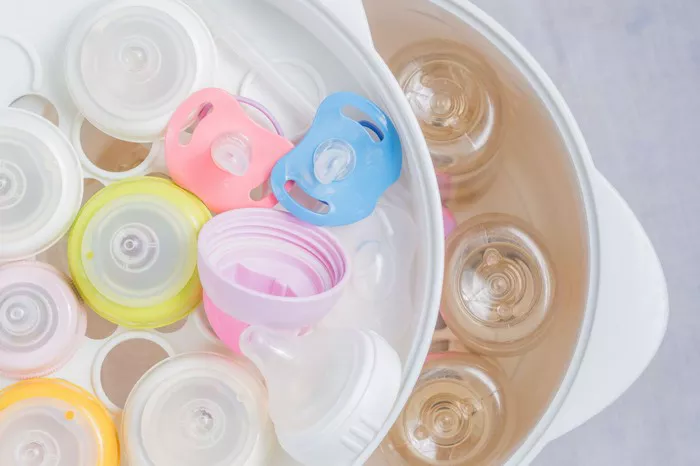Welcoming a newborn into the family is an exciting time, filled with joy and anticipation. However, as new parents, it’s natural to feel overwhelmed by the myriad of choices you need to make to ensure your baby’s well-being. One such decision is selecting the right bottle teat for feeding your newborn. With countless options available on the market, it’s essential to understand the factors that influence this choice to provide your baby with a comfortable and safe feeding experience.
Understanding the Importance of Bottle Teats:
The bottle teat, also known as a nipple or teat, plays a crucial role in the feeding process for newborns who are bottle-fed. It serves as a substitute for the mother’s breast, delivering milk or formula to the baby in a manner that simulates breastfeeding as closely as possible. The right bottle teat can contribute significantly to your baby’s comfort, digestion, and overall feeding experience.
Factors to Consider When Choosing a Bottle Teat:
1. Flow Rate:
One of the most important considerations when selecting a bottle teat is the flow rate. Newborns have different feeding needs compared to older infants, and their ability to suck and swallow varies. Choosing a teat with a slow flow rate ensures that your newborn can feed at a pace that is comfortable and appropriate for their age.
2. Material:
Bottle teats are typically made from silicone or latex. Silicone teats are durable, easy to clean, and resistant to odors and stains. Latex teats, on the other hand, are softer and more flexible, closely resembling the texture of a mother’s breast. Consider your baby’s preferences and any potential allergies when selecting the material of the teat.
3. Shape and Design:
Bottle teats come in various shapes and designs, including traditional, wide-neck, and orthodontic shapes. The shape of the teat can affect your baby’s latch and sucking motion. Orthodontic teats are designed to promote proper oral development by mimicking the shape of the mother’s nipple during breastfeeding.
4. Size and Age Suitability:
Bottle teats are available in different sizes to accommodate the age and developmental stage of your baby. Newborns typically require smaller teats with a slower flow rate, while older infants may need larger teats with a faster flow rate. Make sure to choose a teat size that is appropriate for your baby’s age and feeding habits.
5. Compatibility with Bottles:
Not all bottle teats are compatible with every bottle. When choosing a bottle teat, ensure that it is compatible with the bottles you plan to use. This will prevent any issues with leaking or difficulty assembling the bottle.
6. Special Considerations:
Some babies may have specific feeding issues or medical conditions that require special consideration when choosing a bottle teat. For example, babies with reflux may benefit from anti-colic or anti-reflux teats designed to reduce air intake during feeding.
7. Ease of Cleaning:
Keeping your baby’s feeding equipment clean is essential for their health and hygiene. Choose bottle teats that are easy to disassemble and clean thoroughly to prevent the buildup of bacteria and mold.
8. Cost and Accessibility:
Consider your budget and the availability of replacement teats when selecting a bottle teat. While some teats may be more expensive, they may offer additional features or benefits that justify the cost. However, there are also many affordable options available that provide excellent quality and functionality.
Choosing the Right Bottle Teat for Breastfed Babies:
For mothers who plan to breastfeed their newborns, choosing the right bottle teat can help facilitate the transition between breastfeeding and bottle-feeding. Look for bottle teats specifically designed for breastfed babies, which mimic the natural sucking motion and feel of breastfeeding. These teats often feature a wider base and softer texture to resemble the mother’s breast more closely.
Experimenting with Different Bottle Teats:
It’s essential to keep in mind that every baby is unique, and what works for one baby may not work for another. Don’t be afraid to experiment with different bottle teats to find the one that best suits your baby’s needs. Some babies may prefer a certain shape or flow rate, while others may have specific preferences based on their feeding habits.
Tips for Introducing Bottle Teats to Your Newborn:
- Start introducing the bottle teat gradually, ideally around 4-6 weeks of age, to allow your baby to establish a breastfeeding routine.
- Choose a calm and quiet environment for bottle-feeding to minimize distractions and help your baby focus on feeding.
- Hold your baby in a comfortable position, supporting their head and neck, to promote proper latch and sucking.
- Offer the bottle teat with patience and gentleness, allowing your baby to suck and swallow at their own pace.
- Be responsive to your baby’s cues and signals, such as hunger or fullness, to ensure a positive feeding experience.
Conclusion:
Choosing the right bottle teat for your newborn is an important decision that can impact their feeding experience and overall well-being. By considering factors such as flow rate, material, shape, size, and compatibility, you can select a bottle teat that meets your baby’s needs and preferences. Remember to be patient and flexible as you introduce bottle-feeding to your newborn, and don’t hesitate to seek advice from healthcare professionals if you have any concerns or questions. With the right bottle teat and feeding routine, you can ensure that your baby receives the nourishment they need to thrive and grow.


